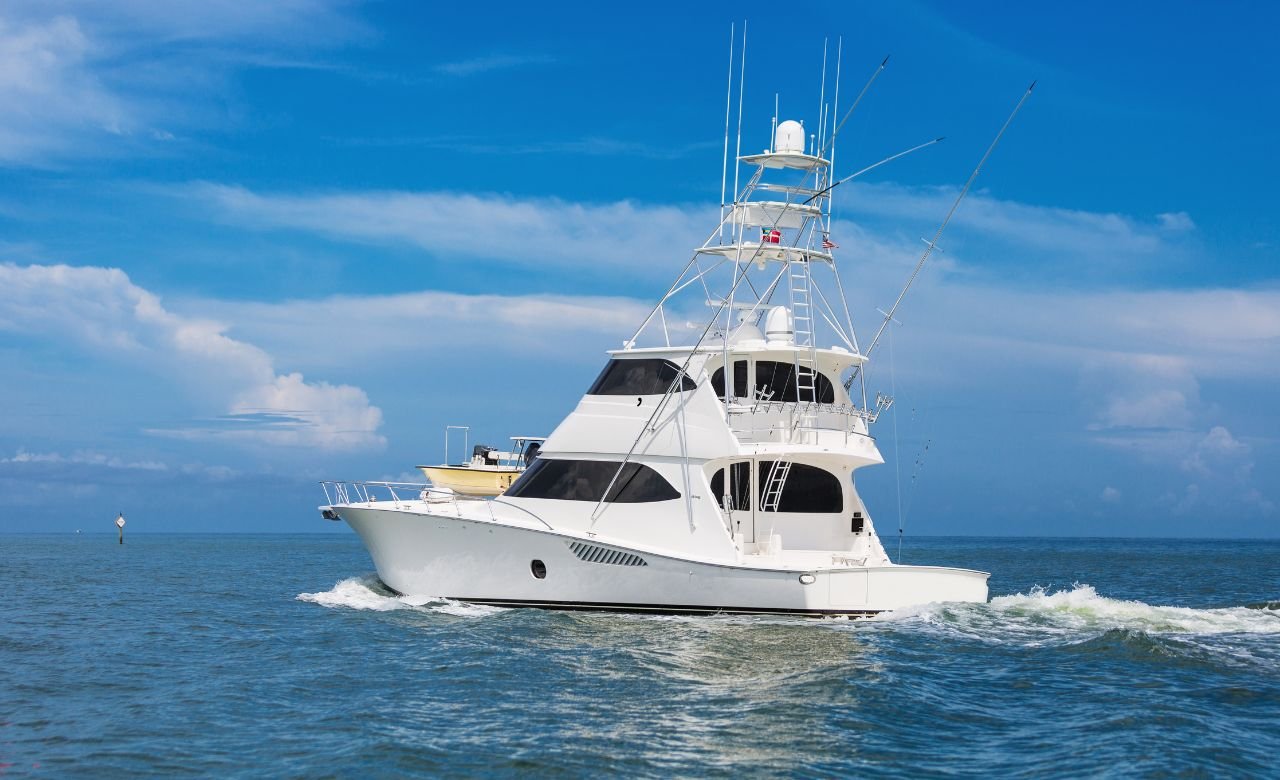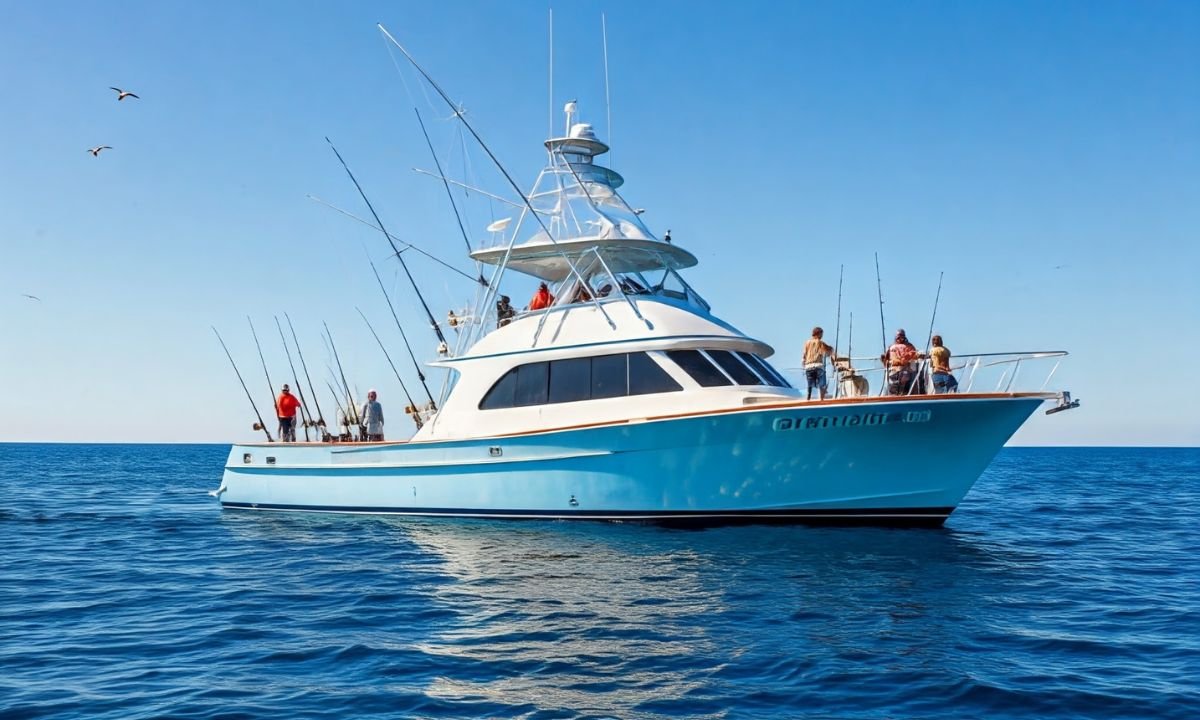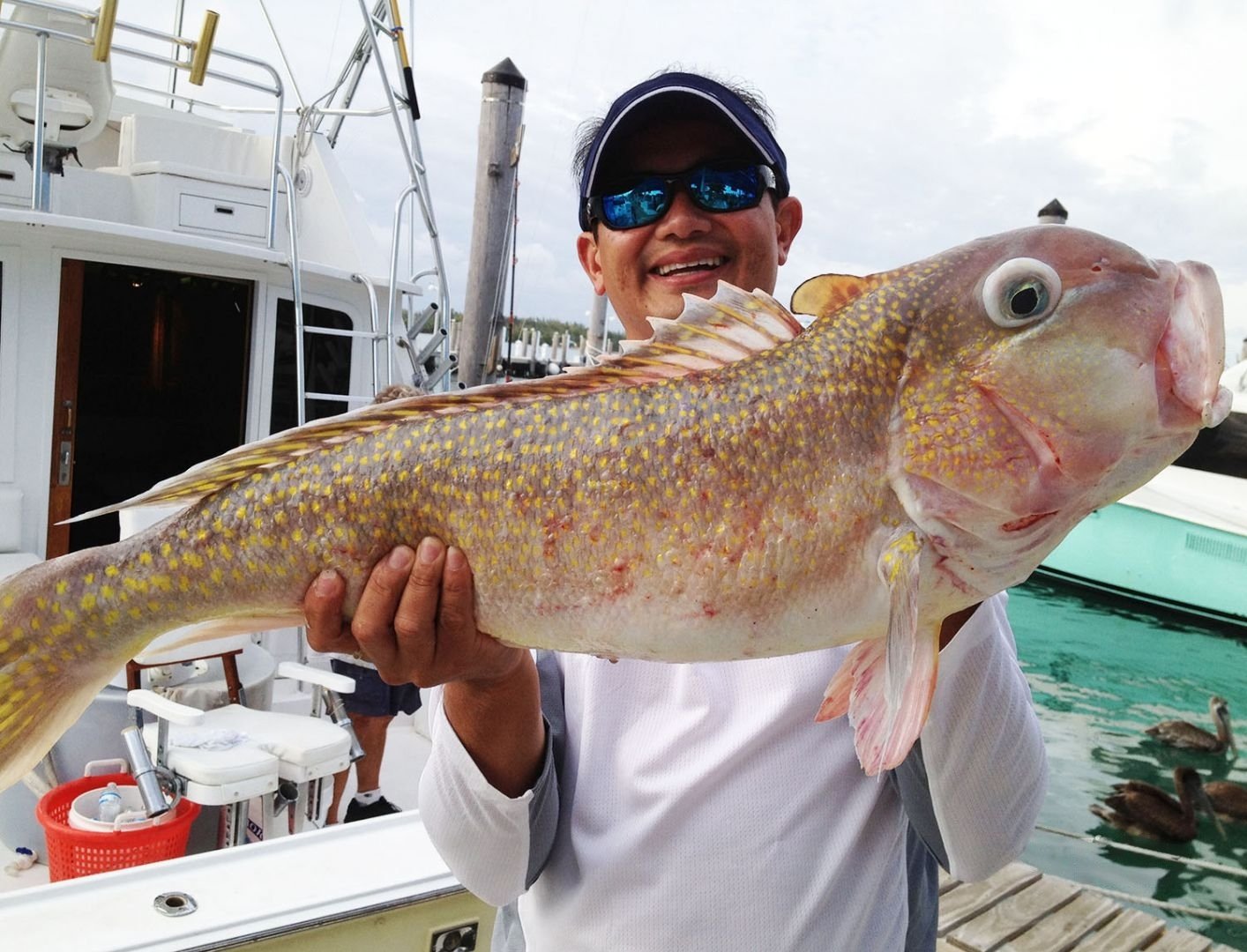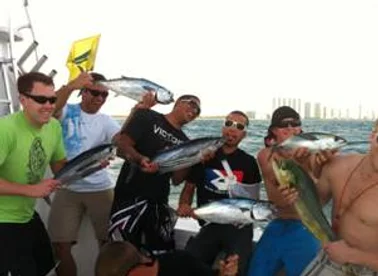Big game fishing, often referred to as offshore or Deep Sea Fishing, is a thrilling pursuit that pits anglers against some of the ocean’s most formidable creatures. The sport is not only about the size of the catch but also the entire experience – the chase, the fight, and the ultimate triumph. This comprehensive guide aims to provide you with all the information you need to embark on your Big Game Fishing adventure, from selecting the right gear to mastering the necessary techniques.
Understanding Big Game Fishing
Big game fishing targets large fish species such as marlin, tuna, swordfish, and sharks. These species inhabit deeper waters, far from the shore, which requires anglers to venture out into the open ocean. The challenge and excitement lie in the pursuit of these powerful fish, testing the angler’s skills and endurance. This type of fishing is not just about the catch but about the journey, the fight, and the satisfaction of a successful hunt.
The Best Locations for Big Game Fishing
The location is crucial in big game fishing, as different areas are known for specific species. Some of the top spots around the world include:
- Miami, Florida, USA: Miami is a vibrant fishing destination known for its abundance of sailfish, marlin, and tuna. The warm waters and diverse marine life make it a hotspot for big game fishing enthusiasts.
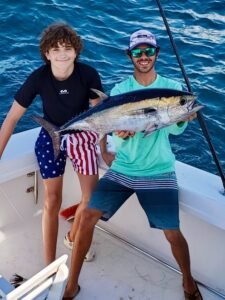
Big Game Fishing - Kona, Hawaii, USA: Kona’s calm waters and abundant marine life make it an ideal location for year-round big game fishing, with high chances of catching marlin and yellowfin tuna.
Choosing the right spot involves considering the species you aim to catch, the best season for fishing in that area, and local regulations. Researching and consulting with local experts can significantly enhance your chances of a successful trip.
Essential Gear for Big Game Fishing
The right equipment is crucial for a successful big game fishing adventure. Given the size and power of the targeted species, your gear must be robust and reliable.
Fishing Rods and Reels
Investing in heavy-duty rods and high-capacity reels is essential. Heavy-duty rods are designed to withstand the immense strain that big game fish exert, while high-capacity reels can hold several hundred yards of heavy line, crucial for the long runs these fish often make.
Lines and Leaders
Braided lines are popular in big game fishing due to their strength and durability. Fluorocarbon leaders are also essential, providing abrasion resistance and being less visible to fish, increasing your chances of a successful hook-up.
Terminal Tackle
Your terminal tackle should include strong, sharp hooks – circle hooks are often recommended for big game fishing. Swivels and snap swivels are also crucial to prevent line twists and make it easier to change lures or rigs.
Bait and Lures
Live bait is commonly used in big game fishing, with mackerel, squid, and mullet being popular choices. Artificial lures, such as trolling lures, poppers, and jigs, mimic the movement of prey and can be highly effective.
Techniques for Big Game Fishing
Mastering various fishing techniques can significantly increase your chances of success in big game fishing.
Trolling
Trolling involves dragging lures or bait behind a moving boat, allowing you to cover large areas and locate fish. Outriggers are often used to spread lines and prevent tangling, creating a more effective fishing spread.
Drifting
Drifting allows your bait or lure to move naturally with the current. This technique is effective when fish are spread out over a large area and can increase your chances of attracting a bite.
Kite Fishing
Kite fishing keeps bait on the surface, creating an enticing presentation for surface-feeding predators like sailfish and marlin. This technique can be particularly effective in calm conditions and clear waters.
Preparing for a Big Game Fishing Trip
Preparation is key to a successful Big Game Fishing trip. This involves both physical and mental readiness, as well as ensuring you have all the necessary gear and safety equipment.
Physical Preparation
Big game fishing requires physical stamina and strength. Ensure you are in good shape and prepared for long hours on the water, as reeling in a big fish can be a strenuous activity.
Mental Preparation
Patience and focus are crucial in big game fishing. Long waits are often part of the experience, so staying mentally prepared and maintaining a positive attitude can make a significant difference.
Safety Precautions
Safety should always be a top priority. Wear life jackets at all times, carry emergency gear such as a first aid kit, flares, and a VHF radio, and always be aware of weather conditions to avoid getting caught in sudden storms.
On the Day of the Trip
The day of your big game fishing trip should start early to maximize your time on the water. Effective teamwork and clear communication are crucial, especially when dealing with a large catch.
Early Start
Starting your day early allows you to take advantage of the morning bite and gives you more time to locate and catch fish.
Teamwork
Big game fishing often requires a team effort. Assign roles and ensure everyone knows their responsibilities. Effective communication can make the difference between a successful catch and a missed opportunity.
Keeping an Eye on the Fish Finder
A fish finder can be invaluable for locating schools of fish and determining the best spots to fish. Regularly check the fish finder to adjust your strategy as needed.
Catching and Handling Big Game Fish
Once a fish takes the bait, the real challenge begins. Proper technique and handling are crucial to successfully catching and bringing the fish aboard.
The Hook-Up
When a fish takes the bait, it’s essential to set the hook firmly and maintain steady pressure to prevent the fish from escaping. Quick, decisive action is often required to secure the hook properly.
The Fight
Reeling in a big game fish can be a long and strenuous battle. Use your legs and back to avoid fatigue, and maintain a steady rhythm while reeling. Patience and endurance are key, as the fish will likely make several powerful runs.
Bringing the Fish Aboard
Once the fish is close to the boat, use a gaff to secure it. Be cautious and ensure everyone’s safety during this process, as large fish can be unpredictable and dangerous.
Ethical Catch and Release
If you plan to release the fish, handle it carefully to minimize stress and injury. Use a dehooker to remove the hook and support the fish in the water until it swims away. Ethical catch and release practices are crucial for conserving fish populations.
Post-Fishing Activities
After a successful day of fishing, there are several important tasks to complete, including cleaning and storing your catch, sharing your experience, and reviewing your trip.
Cleaning and Storing Your Catch
If you intend to keep the fish, clean and store it properly to maintain its quality. Use a sharp knife for cleaning, and store the fish in an ice-filled cooler to keep it fresh.
Sharing Your Experience
Documenting your trip with photos and videos allows you to share your experience with others. Sharing your stories can inspire fellow anglers and help build a community of fishing enthusiasts.
Reviewing Your Trip
Reflect on what worked and what didn’t. Analyzing your trip can provide valuable insights and help you improve your strategy and techniques for future outings.
Conservation and Sustainability
Conservation is an integral part of big game fishing. Respecting fishing limits and supporting conservation efforts are essential to preserving marine life for future generations.
Respecting Fishing Limits
Adhere to local regulations and fishing limits to help protect fish populations. Over fishing can deplete resources and harm the ecosystem, so responsible fishing practices are crucial.
Supporting Conservation Efforts
Participate in conservation programs and support organizations dedicated to protecting marine life. By contributing to these efforts, you help ensure that big game fishing remains a sustainable and enjoyable sport for years to come.
Conclusion
Fishing Fintastic offers an adventure like no other, combining skill, strategy, and a deep connection with nature. By following this comprehensive guide, you’ll be well-prepared to tackle the challenges and reap the rewards of catching big fish. Whether you’re a seasoned angler or a beginner, the thrill of the chase and the satisfaction of a successful catch await you. Embrace the adventure, respect the ocean, and enjoy the unparalleled experience of big game fishing.
FAQs About Big Game Fishing
What is the best time of year for big game fishing?
The best time for big game fishing varies by location and target species. Generally, warmer months are more productive, but it’s essential to research specific regions and their peak seasons.
How can I improve my chances of catching big fish?
Improving your chances involves selecting the right location, using the appropriate gear, and employing effective techniques. Consulting with local experts and guides can also provide valuable insights.
Is big game fishing safe?
Big game fishing is generally safe when proper precautions are taken. Always prioritize safety by wearing life jackets, carrying emergency gear, and staying aware of weather conditions.
What should I bring on a big game fishing trip?
Essential items include appropriate fishing gear, safety equipment, sun protection, food, and drinks. It’s also a good idea to bring a camera to document your adventure.
Can I go big game fishing if I’m a beginner?
Yes, beginners can enjoy big game fishing. Consider booking a trip with an experienced guide or charter service to learn the ropes and increase your chances of success.

